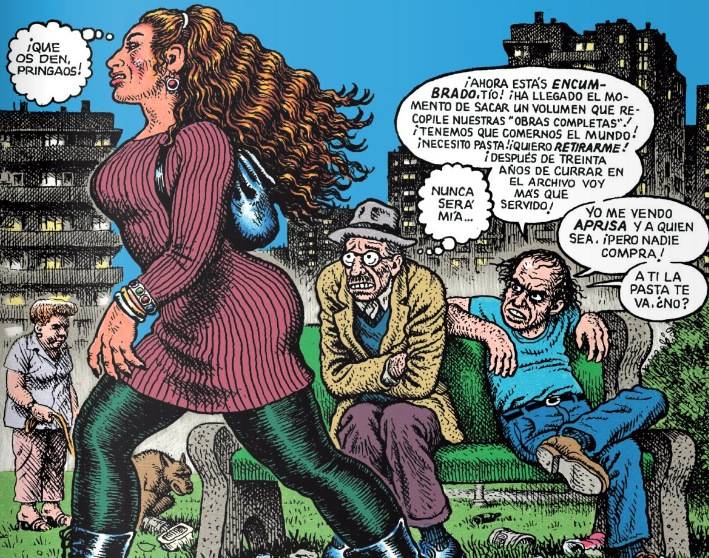
Acclaim would only grow over the years with comic book critic Robert Boyd stating Pekar’s work resonated with a “keen sense of being working class” and his “concept of doing realistic short stories and vignettes was a radical move. The review declared “it is easy to see why” his work “has been compared by literary critics to Chekhov’s and Dostoyevsky’s” ( New York Times ). The New York Times reviewed the anthology asserting that his stories about “the cosmic and the ordinary…are hilarious in their surrealism” and display “a desire to make comics as esthetically rigorous and rich in thought and feeling as the best literature” (New York Times ). The first anthology of American Splendor: The Life and Times of Harvey Pekar was published in 1986 and brought Pekar's work to a wider audience, winning the American Book Award in 1987. His stories about the mundane, sometimes sublime, reality of his everyday life resonated with readers becoming an underground cult hit. Pekar met his third wife Joyce Brabner in 1983, with whom he later adopted a daughter Danielle.

Getting a job, finding a mate, having a place to live, finding a creative outlet” (Telegraph 13 July 2010).

He described American Splendor as an “autobiography written as it's happening. His aim was “to write literature that pushes people into their lives rather than helping people escape from them” ( Comics Journal 14 July 2010). Crumb was joined by other illustrators, Gary Dumm and Greg Budgett, and Pekar began self-publishing the influential American Splendor: From Off the Streets of Cleveland in 1976. Crumb was so impressed by comic strips Pekar created about his daily life that he encouraged him to publish and offered to illustrate. Pekar felt he could push the limits of the medium proclaiming “comics are words and pictures, you can do anything with words and pictures” ( Comics Reporter 13 July 2010). When Pekar began “in the 1970s, mainstream comics were infantile and conformist, while underground "comix" were tethered to the counterculture” ( Guardian 18 July 2010). Pekar first conceived of writing his own comic book after seeing work done by Robert Crumb, his friend and an influential underground “comix” cartoonist, later stating “It dawned on me that comics were not an intrinsically limited medium” (N ew York Times 12 July 2010). Although he never went back to college, educating himself remained a priority describing himself as a “working-class intellectual” ( New York Times ). Influenced by the Beats, he began his writing career as a critic of jazz records for Downbeat and Jazz Review in the late 1950s. After briefly attending WESTERN RESERVE UNIVERSITY he eventually found steady work as a file clerk at the Veteran's Administration Hospital in Cleveland from 1965 until his retirement in 2001. Born in Cleveland to Saul and Dora Pekar, Jewish immigrants from Poland, he graduated from Shaker Heights High School in 1957. PEKAR, HARVEY LAWRENCE (8 October 1939-12 July 2010) was a comic book writer and critic.


 0 kommentar(er)
0 kommentar(er)
